Last updated on October 25, 2023
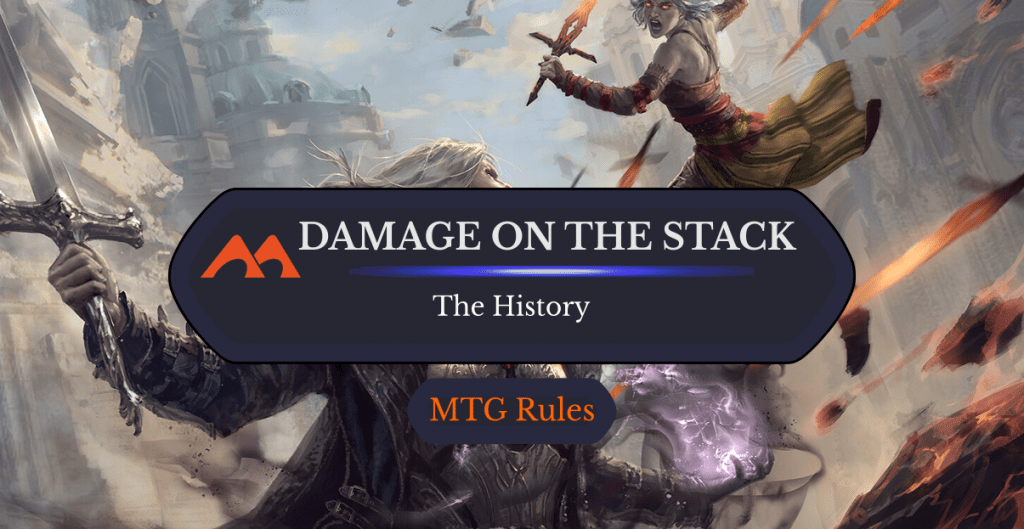
Single Combat | Illustration by Livia Prima
The stack. You’ve probably had your fair share of interesting interactions with other players using the stack. You might even be the one who knows your way around it the most in your playgroup. Or, hey, you might be newer to the game and still figuring things out.
Regardless of your current standing with the stack, chances are we can agree that abilities and spells go there and that’s how players interact with each other. That said, you may have heard older players talk or joke about when damage went on the stack, and you’ve probably stopped to wonder what that means exactly.
If you’re still wondering, then take a seat. It’s about time we had a nice chat about the way things used to be.
The Stack: Past and Present
Well, let’s start by looking at how the stack works with its usual interactions.
Let’s say you cast Shock targeting my Siren Stormtamer. As the rules stand now, that spell goes on the stack and you pass priority to me so that the spell can resolve.
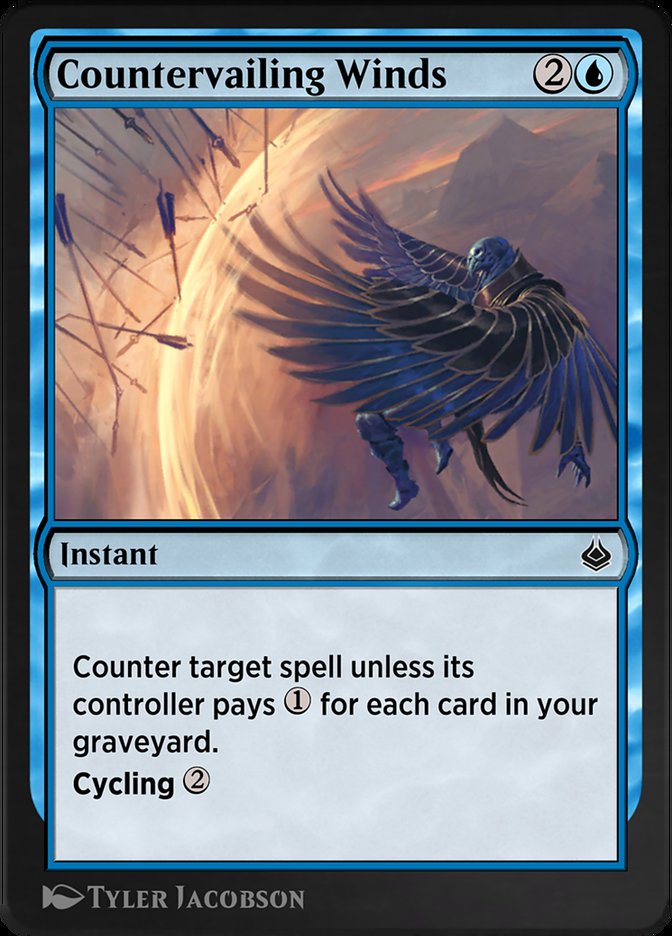
Now, let’s say that I have a counterspell in my hand, like Countervailing Winds. I cast it and target your spell, pass priority to you, and you let the stack revolve. My counterspell resolves first and your spell fizzles. End of interaction.
The same goes for abilities. They get placed on the stack the same way spells do. Now, this may be odd to hear, but damage used to go on the stack in the exact same way.
Okay, But How Did It Work?
Back in 1999, Wizards released Sixth Edition, and with it a change of rules. These changes introduced a multitude of things, especially with combat. These rules also introduced damage to the stack.
Mogg Fanatic
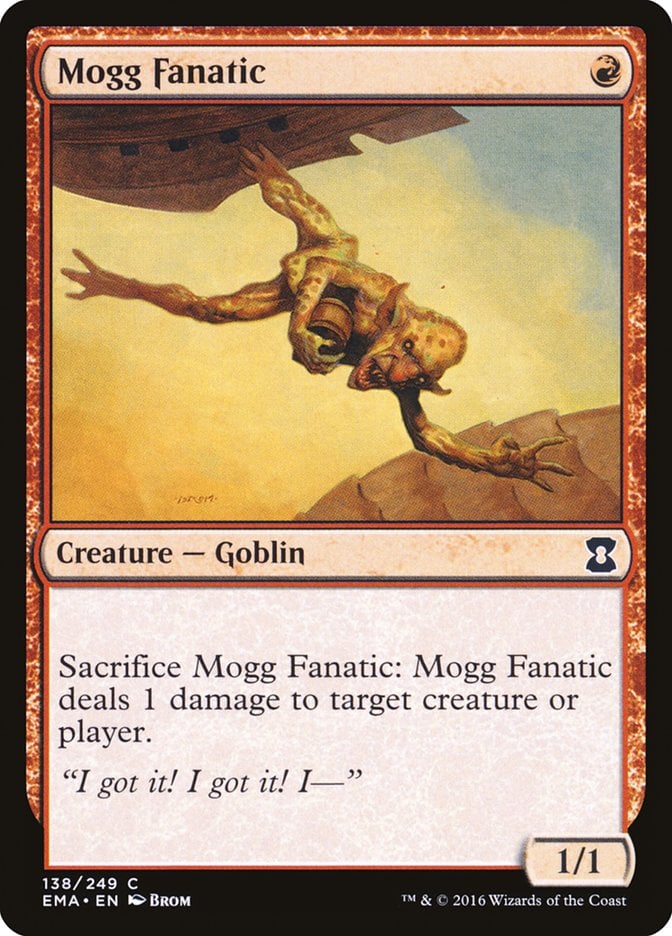
While I definitely don’t have time to crack down on how all of the combat changed, I can give you a good idea of how damage acted with its new home. Here’s an example:
- I attack with my Mogg Fanatic.
- You block with your Bear Cub.
- Damage goes on the stack. I assign 1 damage to your creature, and you assign 2 damage to mine.
- I sacrifice Mogg Fanatic to its ability and assign that 1 damage to your Bear Cub.
- The 1 damage from combat and the 1 damage from the ability both resolve, even if Mogg Fanatic is dead.
- Your Bear Cub takes 2 damage and dies.

Far too cute to die this way…
This probably seems like a really odd interaction, and you might be curious about more examples that show off some of the staple interactions with damage on the stack.
Morphling
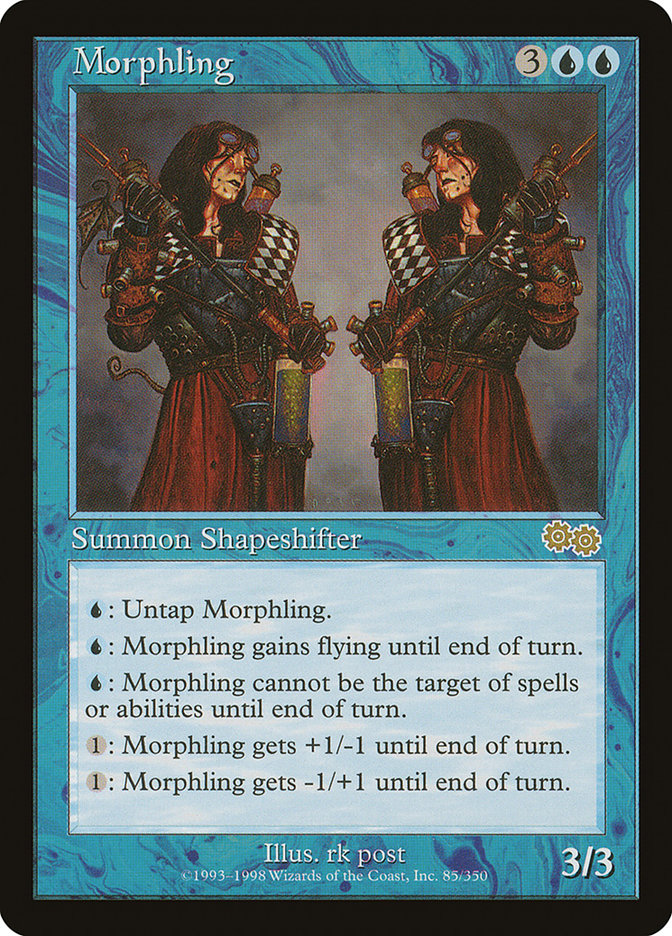
Let’s go over some more, starting with Morphling:
- You attack with something that has 5 toughness.
- I use Morphling’s ability to make it a 5/1.
- I block your 5-toughness creature with Morphling.
- Damage goes on the stack and the 5 damage from Morphling is assigned to your creature.
- I activate Morphling’s other ability as many times as I need to make its toughness high enough to survive the damage assigned to it.
- Damage resolves, and that 5 damage from Morphling is still dealt to your creature, killing it, while Morphling survives.
I enjoy the concept of that interaction. A lot. I may or may not enjoy playing blue cards.
Armadillo Cloak
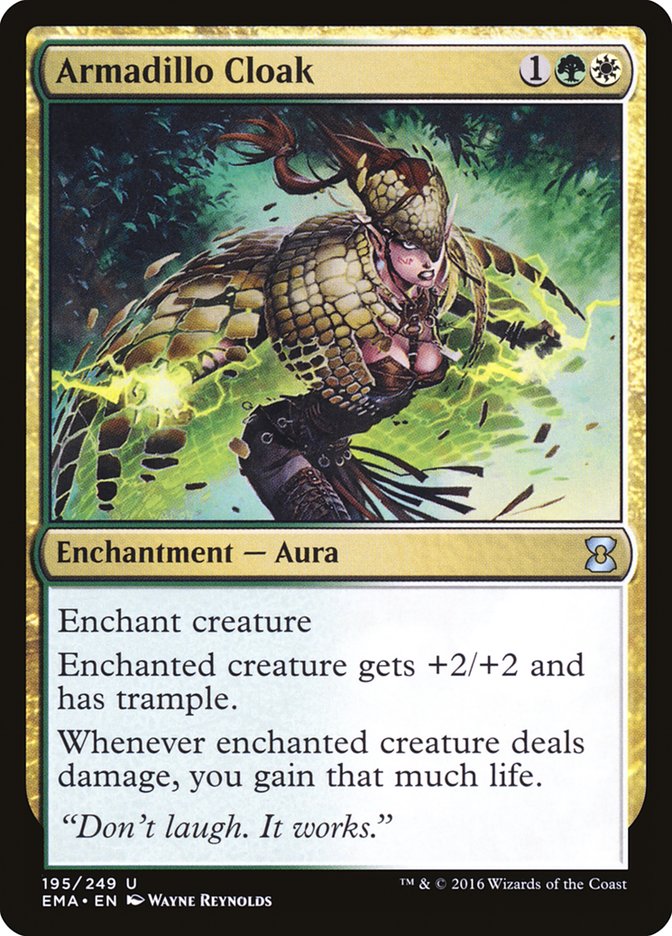
But let’s look at another card to help explain this concept: Armadillo Cloak.
- I attack with my Bear Cub that is enchanted with Armadillo Cloak, making it a 4/4.
- You block with a 4/2.
- I assign 2 damage to your 4/2 and 2 damage to you thanks to trample, and you assign four damage to my Bear Cub. Damage goes on the stack.
- You cast Krosan Grip targeting my Armadillo Cloak. This destroys Armadillo Cloak and my Bear Cub is now only a 2/2.
- Damage resolves, but because Armadillo Cloak was still around when damage was assigned, the values and targets of the damage you and your creature take do not change. Your 4/2 still takes two damage and dies, and you still take two damage while my creature takes 4 damage and dies.
- But I do not gain life from Armadillo Cloak.
Hopefully that helps explain damage assignment and how it acts once it’s on the stack.
Unsummon
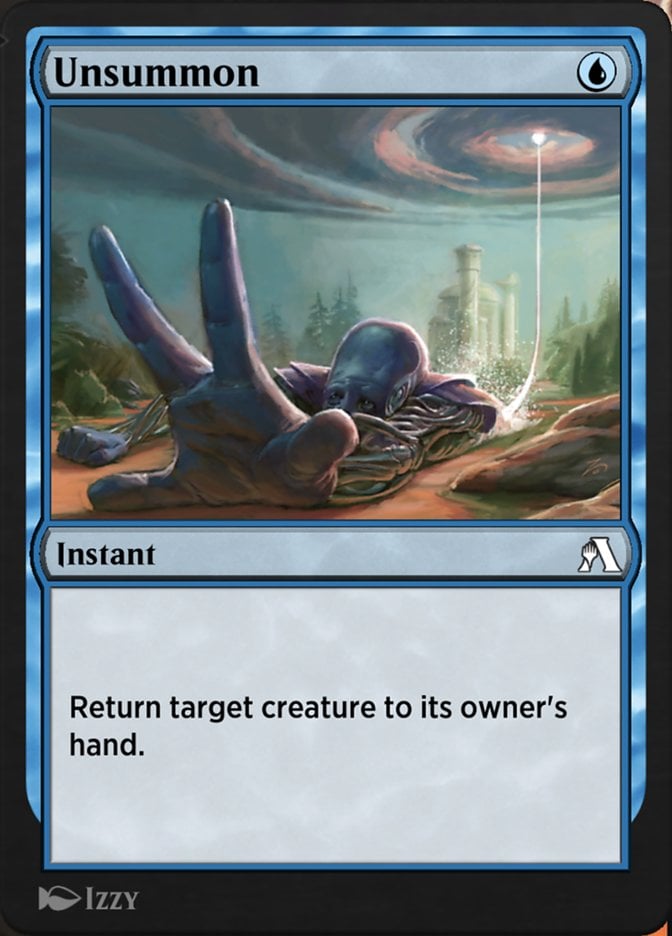
Some other popular interactions came from simple cards like Unsummon or other bounce cards. Here’s how that would work:
- You attack with a 4/4.
- I block with two Bear Cubs.
- I assign all 4 damage to your 4/4 and you assign 2 damage to each of my creatures. Damage goes on the stack.
- I play Unsummon and target one of my Bear Cubs, returning it to my hand.
- Damage resolves. Your 4/4 dies to the 4 damage and my Bear Cub on the battlefield dies to the 2 damage assigned to it but the one that was returned to my hand is safe while still helping out to kill your creature.
There are times where I wish I could do combat tricks such as this to elicit the most effectiveness from my creatures but, alas, the Magic 2010 rules change was for the better. It also took care of mana burn, which used to be something players could use against their opponents. But we won’t be getting into that because mana burn is an obsolete rule that’s no longer used in MTG. I digress.
Why Did the Rule Exist?
There are two changes in the history of rulings for damage on the stack: when it was introduced, and when it was removed. The prior came about with the Sixth Edition rules change. Before this, combat was much simpler.
You could only use damage prevention or regeneration spells and abilities. Combat was narrow, and creatures just smacked each other until one fell down. When the rules surrounding damage were changed to be put on the stack, things got wacky. Really wacky.
Creatures that were never really meant for the battlefield suddenly carried a lot of weight, like our pal Mogg Fanatic. Cards with sacrifice effects became really popular, and there were so many new ways to keep your creatures alive in combat. This change was implemented to open up new avenues of play and vast options. It went well, to say the least, as players quickly adopted the phrase “combat tricks.”
What Goes Up…
Sadly, all good things must come to an end. Except this thing wasn’t exactly great. It was good for the sake of its introduction and for some time after, but it wasn’t meant to last. When it was added to the game, it was purely intended to make combat interesting, but it really didn’t make sense in terms of how a dead creature could still deal combat damage (looking at you, Mogg Fanatic).
Even if it was interesting, the stack was and still is a difficult thing to understand at times. It gets even more confusing with creatures disappearing after putting damage on the stack. Because of this, Wizards changed combat when they released Magic 2010 to act as we know it today, along with tons of other rules changes and overhauls.
This big change made it so that damage now happens all at once unless otherwise stated, like with first strike or double strike. Things are now simpler but there’s still plenty of interaction available. Most importantly, this was done to give more weight to cards that have effects like Mogg Fanatic.
Instead of getting the benefit of the sacrifice effect and blocking a creature, you now have to decide which one is the better option. Damage is now liquid and consistently compared to the power of the creature attacking since you can no longer interrupt damage once it’s assigned. A lot of good and comfortable things happened when damage rules changed to what they are now.
What if it Were Still Around?
This is what I like to think about at night. What kind of cards would be absolutely busted if they were allowed to put damage on the stack? Off the top of my head, I imagine that already powerful cards like Greater Good or Skullclamp paired with something like Phyrexian Altar would be absolutely busted, allowing you to keep damage while drawing and playing more cards instantly.
You could also probably find some good candidates by combing through the reserved list. As cards like those stand now, you get combat or you get sacrifice effects, but you can’t have both. It may seem a little lackluster at times, but decision-making like that is what gives Wizards the design room they need to continuously pump out new and interesting cards that drive players to find wacky new interactions and achieve that kind of power in their plays.
For Better or For Worse
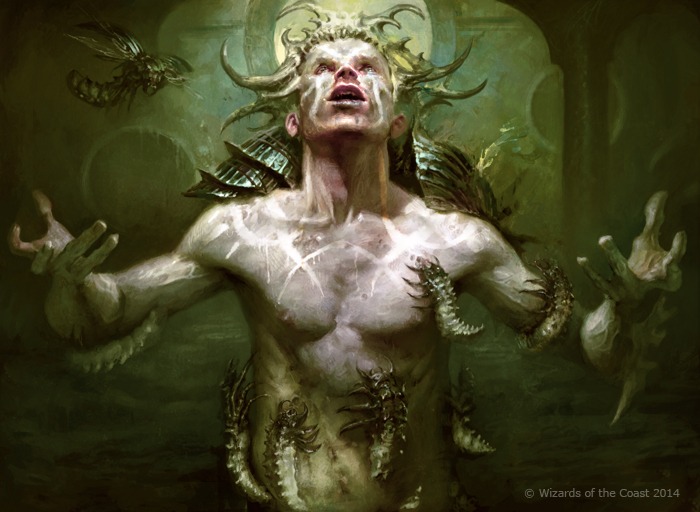
Greater Good | Illustration by Mathias Kollros
What do you think? Should the rules go back to the way they were, or are things fine as they are now? I think that the current state of affairs allows for more dynamic and understandable gameplay, but feel free to change my mind in the comments below!
As always, we appreciate any support you want to show us through our Patreon, and we always encourage that you check out our blog if you enjoy reads like this one. Stay safe as the weather starts to cool down out there, and we’ll see you all again pretty soon!
Follow Draftsim for awesome articles and set updates:
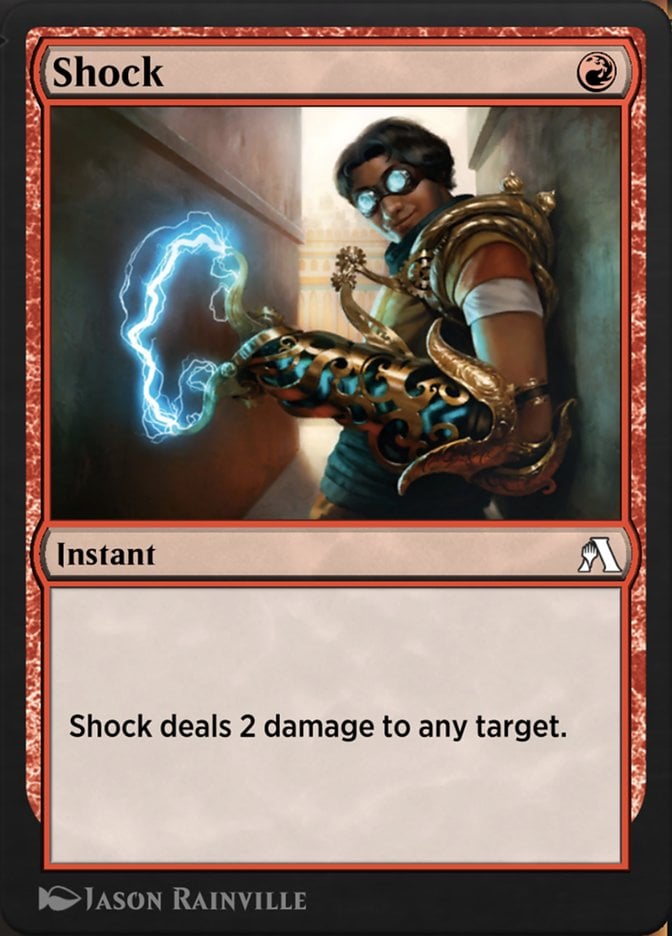
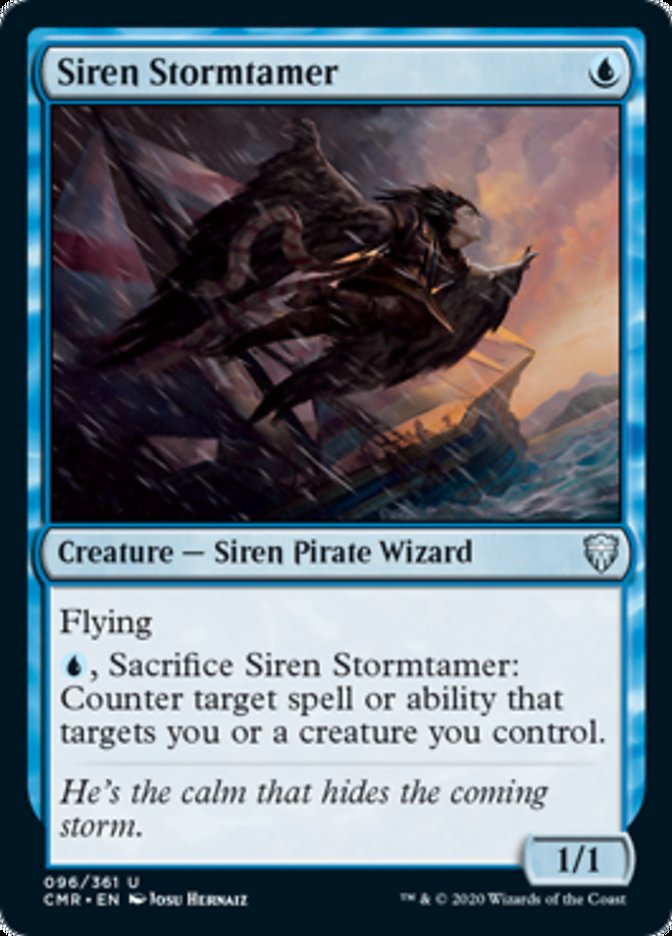
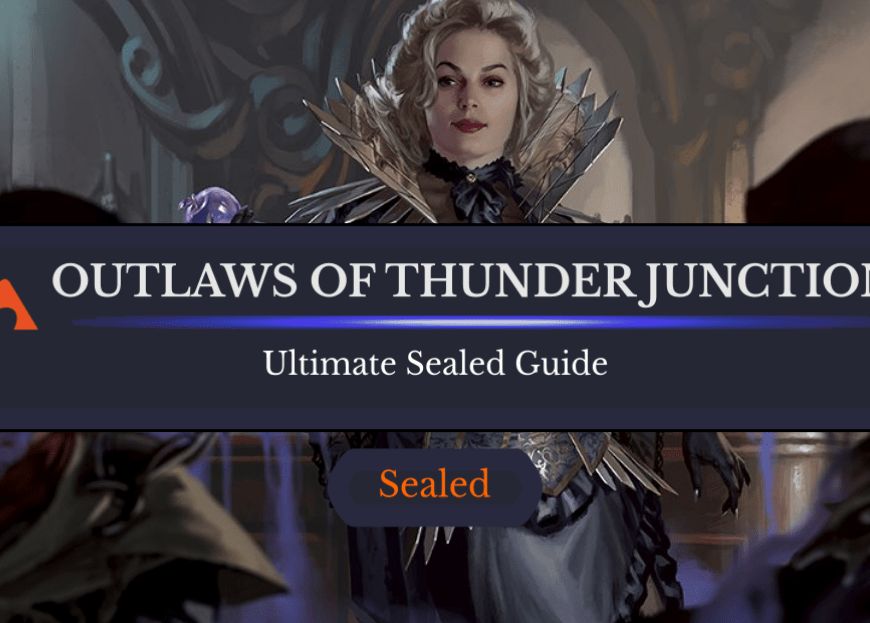

5 Comments
I was still a relatively new player when they made the M2010 rules change. It still throws me off sometimes that damage doesn’t go on the stack. It felt very natural at the time and definitely made the combat phase more interesting. I recommend trying pre-2010 house rules on a casual mtg night, it can be a fun time.
Having now only come back to the game after 10-11 years (I stopped at Eventide) I missed this rule change. So it feels weird not having damage on the stack? Things like Mogg Fanatic now appear weak. But at the same time I can understand the design space it opens up to the Magic team.
Might take me a few weeks/months to fully get used to this thou lol
I played MTG briefly as a middle schooler starting with fourth ed and ending with mirage before the pressure of MTG being thought of as for losers got me to stop in high school. That was before damage on the stack of course. Later in college I played a little bit right after the rule change but I never could get a grip on the way it worked and it seemed to me that a lot of guys were just purposely distorting the rule for their benefit so I quickly left again. Middle age nostalgia has me watching youtube videos and reading articles on MTG and it is interesting to me how this rule has come and gone so long ago.
Haha, yeah I feel that one pretty deep there!
I loved damage on the stack. I think it made the game more fun and added a lot more possibilities. Death was not the end! 🙂 Also I feel like it was pretty easy to understand.
Add Comment